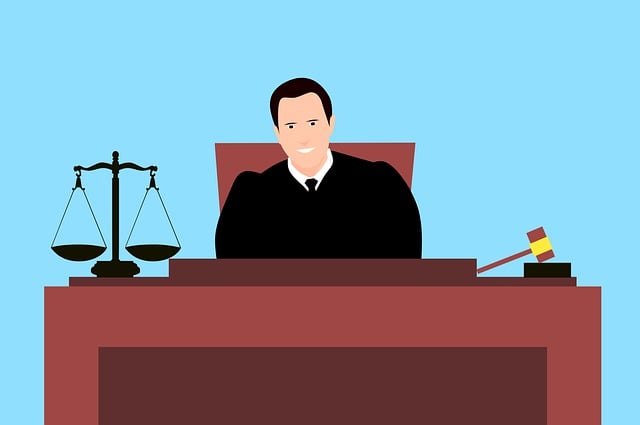Emerging technologies in DUI law, particularly advanced sensor systems, machine learning algorithms, and data analysis techniques, have dramatically improved the accuracy and efficiency of Breath Alcohol Level (BAL) testing. These innovations streamline field sobriety tests, minimize human error, and ensure consistent, admissible breath test results. Modern BAL systems, with smart features like automated data logging, offer precise readings crucial for legal proceedings, enhancing public safety and fostering justice in DUI cases. Lawyers must stay informed about these advancements to adapt their strategies. Artificial intelligence integration holds promise for further revolutionizing the process through automation and standardized protocols.
“In the realm of DUI law, Breath Alcohol Level (BAL) testing is a critical component that demands precision. This article explores the intricate world of BAL testing, delving into its understanding and evolution. We examine the emergence of advanced technologies aimed at enhancing accuracy, such as innovative devices that surpass traditional methods. Additionally, we analyze legal implications through case studies, showcasing how new technologies impact DUI defenses. Furthermore, future prospects are discussed, highlighting continuous improvements in BAL testing’s reliability.”
- Understanding BAL Testing: A Key Component in DUI Law
- The Evolution of Emerging Technologies for Accurate Results
- Advantages of Advanced BAL Devices Over Traditional Methods
- Legal Implications and Case Studies: How New Technologies are Shaping DUI Defense
- Future Prospects: Continuous Improvement in BAL Testing Accuracy
Understanding BAL Testing: A Key Component in DUI Law

BAL testing plays a pivotal role in the field of DUI (Driving Under the Influence) law, serving as a critical component in determining an individual’s blood alcohol concentration (BAC). This scientific process involves measuring the amount of alcohol present in a person’s breath, offering a non-invasive and efficient way to assess intoxication levels. As emerging technologies in DUI law continue to evolve, BAL testing methods are becoming more accurate and reliable.
Advanced techniques such as infrared technology and sensor advancements have significantly enhanced the accuracy of BAL devices. These innovations ensure that officers can obtain precise readings quickly during field sobriety tests, reducing potential for human error or manipulation. With continuous improvements in emerging technologies, BAL testing is poised to maintain its significance in DUI investigations, upholding the integrity of the legal process while ensuring public safety on the roads.
The Evolution of Emerging Technologies for Accurate Results

The evolution of emerging technologies has revolutionized BAL (Breath Alcohol Level) testing, pushing it to new heights of accuracy and reliability. Traditional methods often faced challenges in terms of consistency and false readings, leading to debates in the legal realm, particularly within DUI (Driving Under the Influence) law. However, technological advancements have addressed these concerns by introducing more sophisticated devices and techniques.
From sensitive photonic sensors to advanced data analytics, these emerging technologies ensure that each breath test is precise and admissible as evidence. This progress is a boon for law enforcement agencies and legal professionals, providing them with the tools to make informed decisions in DUI cases. The integration of these innovative solutions has undoubtedly strengthened the accuracy of BAL testing, ultimately enhancing justice and public safety.
Advantages of Advanced BAL Devices Over Traditional Methods

The advancement of technology in Breath Alcohol Testing (BAL) devices has brought about significant improvements over traditional methods, offering a more accurate and efficient approach to DUI law enforcement. One of the key advantages is the increased precision and reliability provided by modern BAL devices. These advanced systems utilize cutting-edge sensors and calibration techniques to minimize errors and ensure consistent readings. This advancement is crucial in legal settings where accurate evidence is essential for fair trials.
Emerging technologies have also enabled more portable and user-friendly BAL devices, making field testing more convenient. The ability to conduct breath tests on the side of the road or at a police station instead of requiring suspects to be transported enhances efficiency. Additionally, these new devices often incorporate smart features like automated data logging and secure data transmission, streamlining the evidence collection process and aligning with modern law enforcement practices.
Legal Implications and Case Studies: How New Technologies are Shaping DUI Defense

The introduction of new technologies has significantly impacted the field of DUI (Driving Under the Influence) defense, presenting both opportunities and challenges for legal professionals. Emerging Technologies in DUI Law offer advanced tools for evidence collection and analysis, which can either strengthen or weaken cases. For instance, Breath Alcohol Test (BAL) machines now employ more sophisticated sensors and calibration methods to ensure accurate readings, addressing concerns raised by traditional testing methods. These advancements are crucial as they directly influence legal outcomes, particularly in jurisdictions with strict DUI laws.
Case studies illustrate the effect of these innovations. In recent years, lawyers have successfully challenged DUI convictions based on flawed or outdated technology. For example, research into memory effects in BAL machines led to the exclusion of certain device models in court. Conversely, advancements like remote breath testing and portable devices can expedite the collection of evidence at the scene, potentially benefiting defendants by providing more reliable data. As legal professionals stay abreast of these emerging technologies, they must adapt their strategies to ensure just outcomes for all parties involved.
Future Prospects: Continuous Improvement in BAL Testing Accuracy

As technology evolves, emerging technologies in DUI law are expected to significantly enhance the accuracy and efficiency of BAL (Breath Alcohol) testing. Innovations such as advanced sensor systems, machine learning algorithms, and improved data analysis techniques promise more precise results, reducing potential errors and margin for human intervention. These advancements could lead to standardized testing protocols that are both more reliable and easier to implement across various law enforcement agencies.
The integration of artificial intelligence in particular has the potential to revolutionize BAL testing by automating certain processes, identifying patterns in test outcomes, and predicting potential issues or anomalies. This not only ensures consistent accuracy but also allows for continuous improvement in testing methods over time. As these technologies mature, they may even facilitate remote monitoring and real-time data sharing, enhancing the overall effectiveness of DUI enforcement efforts.
In conclusion, the evolution of emerging technologies in DUI law, specifically in Breath Alcohol (BAL) testing, is a game-changer. The shift from traditional methods to advanced BAL devices offers unparalleled accuracy and reliability, which is paramount for fair legal proceedings. As these innovations continue to refine the testing process, they not only strengthen the integrity of evidence but also shape the future of DUI defense. Embracing emerging technologies ensures that justice is served with unwavering precision, ultimately enhancing public safety.






